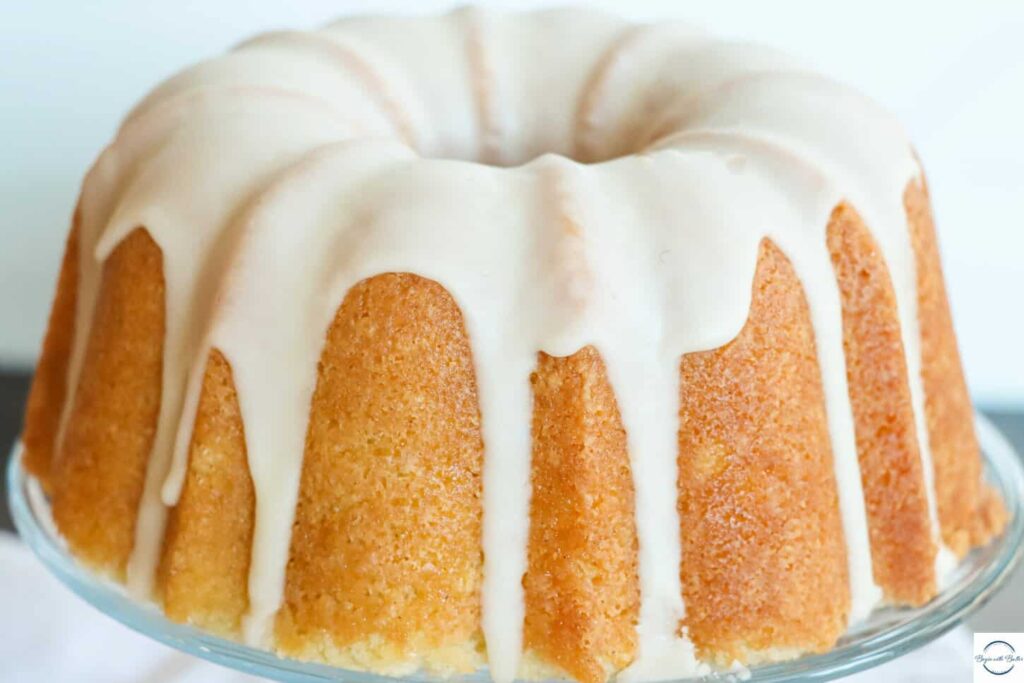Indulging in the warmth and sweetness of a freshly baked vanilla pound cake is an experience that transcends mere culinary delight.
With its rich aroma and buttery texture, this timeless classic has stood the test of time, captivating taste buds for generations.
In this article, we delve into the art of baking the perfect vanilla pound cake, exploring its history, ingredients, baking techniques, and tips to ensure every slice is a heavenly delight.

1. Understanding the Origins of Vanilla Pound Cake
A Glimpse into History:
Tracing its roots back to the 18th century, the vanilla pound cake has evolved from its humble beginnings into a beloved dessert cherished worldwide.
The Significance of “Pound” in Pound Cake:
The term “pound” in its name refers to the traditional recipe’s simple yet precise ratio of ingredients: one pound each of flour, butter, sugar, and eggs.
2. Unveiling the Key Ingredients
Flour:
The foundation of any pound cake, choosing the right flour is crucial for achieving the perfect crumb texture.
Opt for all-purpose flour for a balance between structure and tenderness.
Butter:
The heart of the pound cake, butter adds richness and flavor.
Use high-quality unsalted butter and ensure it’s softened to room temperature for easy incorporation.
Sugar:
Granulated sugar sweetens the cake while contributing to its golden crust.
Balancing the sweetness is essential, so measure accurately for optimal results.
Eggs:
Eggs provide structure and moisture to the cake.
Use fresh, room temperature eggs and beat them well into the batter for a light and airy texture.
Vanilla Extract:
The star of the show, pure vanilla extract infuses the cake with its unmistakable aroma and flavor.
Use high-quality vanilla extract or, for an extra indulgence, vanilla bean paste or scraped vanilla beans.
3. Mastering the Baking Process
Preparing the Batter:
Begin by creaming together softened butter and sugar until light and fluffy.
Add eggs one at a time, followed by vanilla extract, mixing well after each addition.
Gradually incorporate the flour until just combined, being careful not to overmix.
Baking Time and Temperature:
Preheat your oven to the specified temperature and ensure your baking pan is properly greased and lined.
Bake the cake in the center of the oven, rotating halfway through, until a toothpick inserted into the center comes out clean.
Cooling and Serving:
Allow the cake to cool in the pan for 10-15 minutes before transferring it to a wire rack to cool completely.
Serve slices of the vanilla pound cake plain or with a dollop of whipped cream and fresh berries for an irresistible treat.

4. Tips for Success
Room Temperature Ingredients:
To ensure proper emulsification and even baking, all ingredients should be at room temperature before mixing.
Gentle Mixing Technique:
Avoid overmixing the batter, as this can result in a tough and dense cake.
Use a gentle folding motion when incorporating the flour to maintain the cake’s light texture.
Flavor Variations:
Experiment with different flavor variations by adding citrus zest, almond extract, or spices like cinnamon and nutmeg to the batter for a unique twist on the classic recipe.
Conclusion:
In the realm of baking, few delights rival the simple elegance of a perfectly baked vanilla pound cake.
With its timeless appeal and versatile flavor profile, mastering the art of crafting this classic treat is a rewarding endeavor for any home baker.
By understanding the importance of quality ingredients, precise measurements, and careful technique, you can ensure that every slice of your vanilla pound cake is met with delight and satisfaction.

FAQs:
1. Can I use salted butter instead of unsalted butter for my pound cake?
While you can use salted butter, it’s best to stick to unsalted butter to control the saltiness of the cake, especially since the recipe may not account for the additional salt in salted butter.
2. How can I prevent my pound cake from sticking to the pan?
Ensure your pan is properly greased and lined with parchment paper to prevent sticking.
You can also dust the greased pan with flour or cocoa powder for extra insurance.
3. Can I substitute vanilla extract with vanilla essence in my pound cake?
While you can substitute vanilla essence for vanilla extract, keep in mind that vanilla extract provides a more intense flavor.
Adjust the quantity accordingly and consider using pure vanilla extract for the best results.
4. Why did my pound cake sink in the middle?
A sinking pound cake is often the result of overmixing the batter or opening the oven door too early during baking, causing the cake to deflate.
To prevent this, follow the mixing instructions carefully and avoid opening the oven door until the cake is fully baked.
5. How should I store my vanilla pound cake for optimal freshness?
Store your pound cake in an airtight container at room temperature for up to three days.
For longer storage, wrap the cake tightly in plastic wrap and aluminum foil and freeze for up to three months.
Thaw the cake overnight in the refrigerator before serving.
